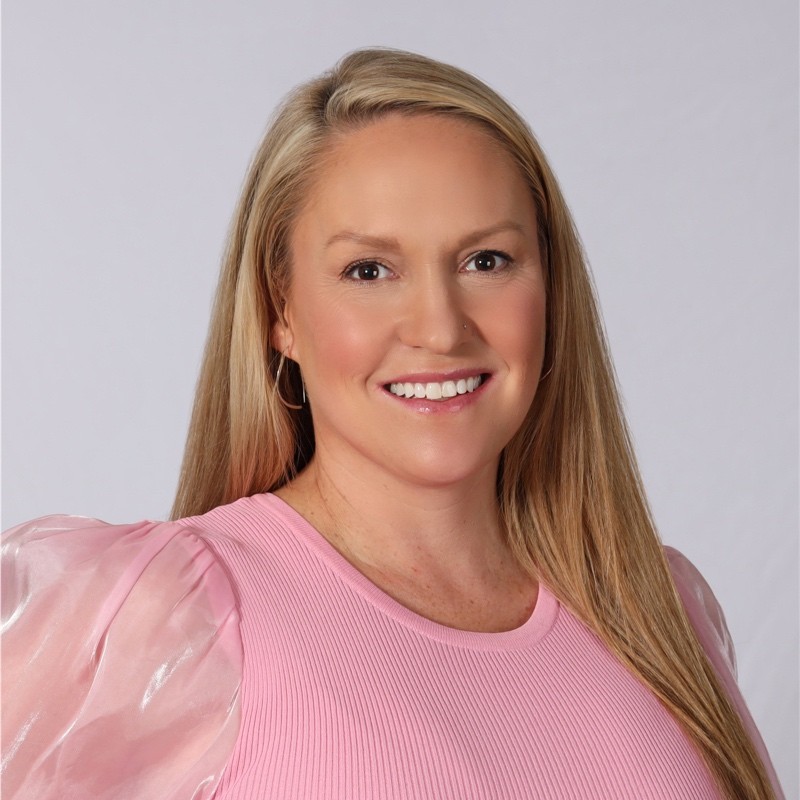
An emergency fund is a savings account set aside to cover unexpected expenses or financial emergencies, such as car repairs, medical bills, home repairs, or job loss. It provides a safety net, preventing you from relying on high-interest credit cards or loans during a financial crisis. Recent statistics show that only 44% of Americans could afford to cover a $1,000 emergency expense from their savings, emphasizing the importance of prioritizing emergency savings.
Why Creating an Emergency Fund is Important?
We’ve heard people asking, why should creating an emergency fund be a top priority?
So here is an answer to this frequently asked question:
Life is full of surprises, and not all of them are pleasant. Your car might break down, requiring costly repairs, or you might face an unexpected medical bill. Home repairs, such as a leaky roof or a broken appliance, can also strain your finances.
An emergency fund bank account ensures that you can handle an unexpected expense without derailing your budget or resorting to debt.
Job Loss or Reduction in Income
Job security is never guaranteed!
Layoffs, company restructuring, or a reduction in work hours can significantly impact your income. An emergency fund provides a financial cushion, allowing you to cover your living expenses while you search for new employment or adjust to a lower income.
Avoiding High-Interest Debt
Without an emergency fund, you may be forced to rely on credit card loans or a personal loan to cover unexpected expenses. These options often come with high interest rates, which can quickly snowball into a cycle of debt. By having an emergency fund, you can avoid these costly borrowing options and maintain better control over your financial well-being.
Peace of Mind and Financial Stability
Knowing that you have a financial safety net provides peace of mind and reduces stress during challenging times. An emergency fund gives you the confidence to handle life’s curveballs without derailing your long-term financial goal. It offers a sense of security and stability, allowing you to focus on finding solutions rather than worrying about how to make ends meet.
How Much Should You Save in Your Emergency Fund?
Financial experts generally recommend saving three to six months’ worth of living expenses in your emergency fund. This amount should cover your essential costs, such as housing, food, utilities, transportation, and insurance, allowing you to maintain your standard of living during a financial emergency.
Factors That Affect the Amount of Your Emergency Fund
Income Stability: If you have a stable, predictable income, you may be comfortable with a smaller emergency fund. However, if your income is variable or you are self-employed, you may need to save more to account for potential fluctuations.
Family Size and Dependents: The more dependents you have, the larger your emergency fund should be. Consider the additional expenses that come with supporting a family, such as childcare, education, and healthcare costs.
Existing Debt Obligations: If you have significant debt payments, such as student loans or a mortgage, you may need a larger emergency fund to ensure you can continue making these payments during a financial setback.
How To Calculate Your Emergency Fund Goal?
Emergency savings fund: how much to add?
This will give you a clear target of the amount to save.
Where to Keep Your Emergency Fund?
Here are the characteristics of an Ideal Emergency Fund Account:
✅ Easy Access:
Your emergency fund should be easily accessible when you need it. Look for an account that allows you to withdraw funds quickly without penalties or restrictions.
✅ Safe:
Ensure that your emergency fund is kept in a safe, FDIC-insured (for banks) or NCUA-insured (for credit unions) account. This protection guarantees that your money is secure, up to $250,000 per depositor per institution.
✅ Competitive Interest Rates:
While the primary purpose of an emergency fund is not to generate significant returns, choosing an account with a competitive interest rate can help your money grow over time.
Two excellent options for an emergency savings fund are High-yield savings accounts and money market accounts.
1. High-Yield Savings Account
High yield savings account is an excellent option for storing your emergency fund. These accounts typically offer higher interest rates than traditional savings accounts, allowing your money to grow faster. They also provide easy access to your funds when you need them, often with no minimum balance requirements or monthly fees.
2. Money Market Account
Money market accounts combine the features of checking and savings accounts. They generally offer higher interest rates than traditional savings accounts and may come with check-writing or debit card access. However, they may require a higher minimum balance and limit the number of withdrawals you can make each month.
Which Account Is Best For Emergency Fund: High Yield Savings account Or Money Market Account?
When choosing an account for your emergency fund, consider the pros and cons of each option.
High-yield savings accounts offer simplicity, easy access, and competitive interest rates.
Money market accounts may provide higher interest rates and additional features but come with more restrictions and requirements.
Ultimately, the best account for your emergency fund is one that meets your specific needs and preferences.
How To Create An Emergency Fund?
Try these steps to create an emergency fund for your future safety:
To start building your emergency fund, create a budget to identify areas where you can cut back on expenses and redirect that money into savings. Track your income and expenses for a month to get a clear picture of your spending habits. Look for opportunities to reduce discretionary expenses, such as dining out, entertainment, or subscription services.
Once you have determined how much you need to save in your emergency fund, set a specific goal with a timeline. Break your goal down into smaller, manageable milestones to make progress feel more attainable. For example, if your goal is to save $10,000 in a year, aim to save $833 per month or $192 per week.
Split Direct Deposits: If your employer offers direct deposit, request to have a portion of your paycheck automatically deposited into your emergency fund account. This way, you’re saving money before you have a chance to spend it.
Scheduled Transfers: Set up automatic transfers from your checking account to your emergency fund account each month. Choose a transfer date that aligns with your payday to ensure the money is saved before you allocate it elsewhere.
If you’re starting from scratch, begin by saving small amounts regularly. Even $50 or $100 per month can add up over time. As you get more comfortable with your budget and saving habits, gradually increase your contributions. Consider saving any extra money you receive, such as bonuses, tax refunds, or gifts, to boost your emergency fund.
When you receive unexpected money, such as a tax refund, bonus, or gift, resist the temptation to spend it on non-essentials. Instead, allocate a significant portion of these windfalls to your emergency fund. This strategy can help you reach your savings goal faster without putting additional strain on your regular budget.
Once you’ve reached your initial emergency fund goal, don’t stop saving. Continue contributing to your emergency fund to build an even stronger financial safety net. As your life circumstances change, such as getting married, having children, or buying a home, you may need to adjust your emergency fund goal to accommodate increased expenses.
Tips for Successfully Managing Your Emergency Fund
Now that you’ve successfully created an emergency fund, make sure you’re managing it too and save it for future:
Keep Your Emergency Fund Separate
To avoid the temptation of dipping into your emergency fund for non-emergencies, keep it in a separate account from your everyday checking and savings accounts. This separation helps you maintain a clear boundary between your emergency savings and your discretionary funds.
Resist the Temptation to Use It for Non-Emergencies
Be disciplined about using your emergency fund only for true emergencies. Avoid tapping into it for impulse purchases, vacations, or other non-essential expenses. Establish clear guidelines for what constitutes an emergency, such as unexpected medical bills, car repairs, or job loss.
Replenish the Fund After Using It
If you need to use a portion of your emergency fund, make it a priority to replenish it as soon as possible. Adjust your budget to allocate more money towards rebuilding your emergency savings until you’ve reached your goal again. This ensures that you’re prepared for future emergencies.
Reassess Your Emergency Fund Goal Periodically
As your life circumstances change, your emergency fund needs may also evolve. Periodically review your emergency fund goal to ensure it still aligns with your current financial situation. Consider factors such as changes in income, family size, or living expenses when determining if you need to adjust your savings target.
Balance Your Emergency Savings with Other Financial Priorities
While building an emergency fund is crucial, it’s also essential to balance it with other financial priorities:
Pay Off High-Interest Debt
While building an emergency fund is crucial, it’s also essential to balance it with other financial priorities, such as paying off high-interest debt. If you have significant credit card balances or personal loans with high interest rates, consider dividing your available funds between your emergency savings and debt repayment. Aim to save a smaller emergency fund while aggressively paying down your debt, then focus on fully funding your emergency savings once your debt is under control.
Save for Retirement
Saving for retirement is another important financial goal that should be balanced with building an emergency fund. If your employer offers a retirement plan with a matching contribution, aim to contribute at least enough to take full advantage of the match. If you have additional funds available, consider splitting them between your emergency fund and retirement savings.
Invest for Long-Term Goals
Once you have a solid emergency fund and are making progress on other financial priorities, consider investing for long-term goals, such as buying a home or funding your children’s education.
While investing can offer the potential for higher returns, it also carries more risk than keeping your money in a savings account. Be sure to carefully consider your risk tolerance and time horizon before investing your emergency fund money.
Conclusion
An emergency fund is a must-have for a strong financial foundation. By saving money for unexpected costs, you can handle life’s surprises without going into debt or getting off track with your money goals. Make your emergency fund a top priority, begin saving now, and feel good knowing you’re ready for whatever comes your way.


